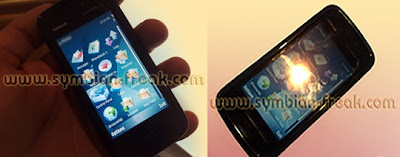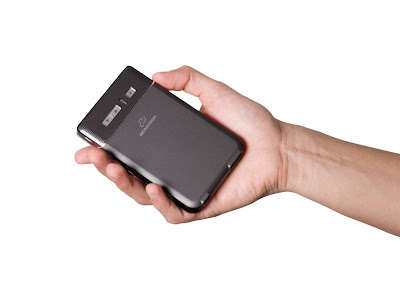
"Xperia represents the first brand that is truly borne from within Sony Ericsson. It represents our vision for a premium, energised communication experience," said Dee Dutta, Head of Marketing, Sony Ericsson. "This launch, and the announcement of the Sony Ericsson X1, further strengthens the overall Sony Ericsson brand and places us at the forefront of mobile convergence."

Sony Ericsson X1 - Mobile web communication
"Our vision for the Sony Ericsson Xperia X1 is to deliver a seamless blend of mobile Web communication and multimedia entertainment within a distinctive design," said Rikko Sakaguchi, Head of Portfolio and Propositions, Sony Ericsson. "Xperia is our promise to think foremost of user experience and to deliver the premium experience - anytime, anywhere, anything, with anyone."

X1 Sony Ericsson - Touch screen & QWERTY keyboard
Enjoy access to different experiences - Web, multimedia, applications - from your desktop. Navigate with the tip of your finger. Configure and have your Xperia panels just the way you want them. Sony Ericsson Xperia X1 lets you interact with your phone in different ways. Touch, full QWERTY keyboard, 4-way key and optical joystick navigation. Switch seamlessly between operation modes.

Sony Ericsson Xperia X1 - Windows Mobile
The arc design gives a distinct and unique feel. Slide the screen upwards to reveal the wide pitch QWERTY keyboard. Ample distance between keys makes writing fast and easy. With Windows Mobile, the highest data transfer rate (HSDPA/HSUPA) and WiFi support, you can enjoy your favourite entertainment and work efficiently on the move. Mobile access to everything that is important to you. aGPS gives you the freedom to explore the world. Xperia X1 is a premium mobile experience. The Sony Ericsson Xperia X1 will be available in selected markets from the second half of 2008.

Sony Ericsson Xperia X1 - Specifications
Xperia X1 - Camera
• Auto focus
• 3.2 megapixel camera
• Photo light
• Video recording
Xperia X1 - Music
• Bluetooth stereo (A2DP)
• Media player
• Music tones
• PlayNow
• Windows Media Player Mobile
• 3D games
• FM radio
• Java
• Video streaming
• Video viewing
Xperia X1 - Internet
• Internet Explorer Mobile
• RSS feeds
Xperia X1 - Communication
• Polyphonic ringtones
• Speakerphone
• Vibrating alert
• Video calling
• Picture messaging (MMS)
• Predictive text input
• Text messaging (SMS)

Xperia X1 - Design
• Xperia panels
• Optical joystick navigation
• Navigation key
• Picture wallpaper
• Touch navigation
Xperia X1 - Organiser
• Alarm clock
• Calculator
• Calendar
• Document editors
• Document readers
• Flight mode
• Handwriting recognition
• Notes
• Phone book
• Tasks
• Touchscreen
Xperia X1 - Connectivity
• aGPS
• Bluetooth technology
• Modem
• Synchronization
• USB support
• WLAN

Xperia X1 - Windows Mobile Operating System
• Microsoft Outlook Mobile: email, contacts, calendar, tasks
• Microsoft Office Mobile: Word, Excel, PowerPoint
• Internet Explorer Mobile
• Windows Media Player Mobile
• Windows Live
• Exchange ActiveSync
• Voice control
• Utility Applications: file explorer, calculator, pictures & video, notes
Sony Ericsson Xperia X1
• Size: 110 x 53 x 16.7 mm
• Weight: 145 grams
• Available colours : Black, Silver
• Main screen: 65,536 color TFT
• Resolution: 800 X 480 pixels
• Size: 3 inches
Xperia X1 - Memory
• Phone memory: up to 400 MB
• microSD memory card support
Xperia X1 - Networks
• GSM/GPRS/EDGE 850/900/1800/1900
• UMTS/HSDPA/HSUPA 900/1700/1900/2100 MHz
• UMTS/HSDPA/HSUPA 850/1700/1900/2100 MHz
[via LetsGoMobile]








































